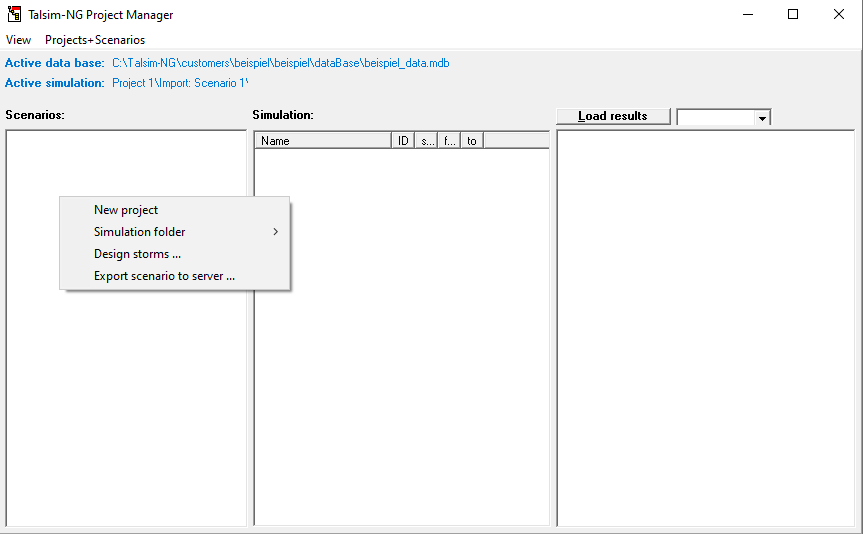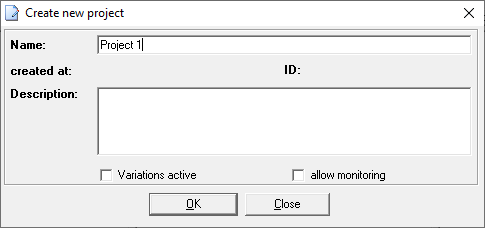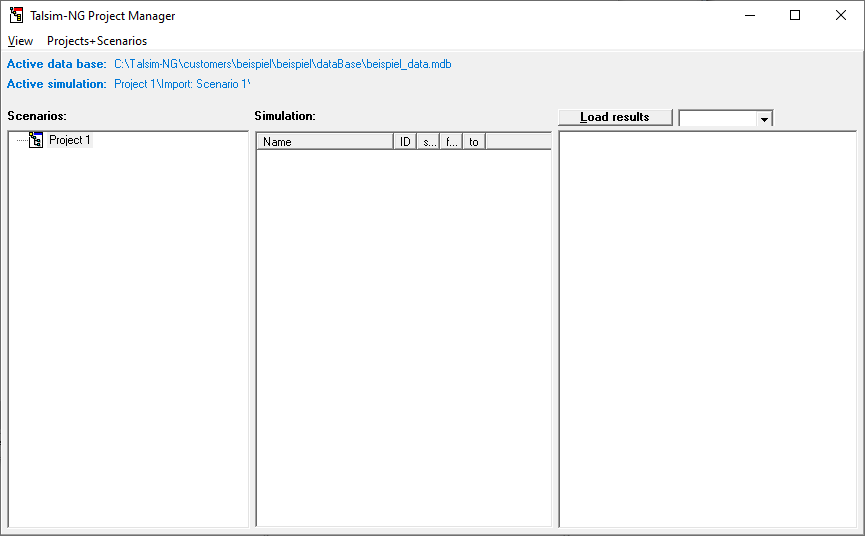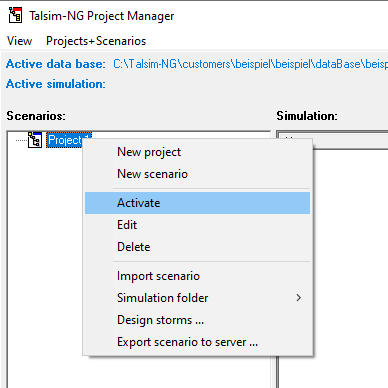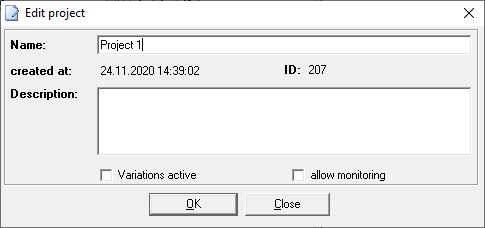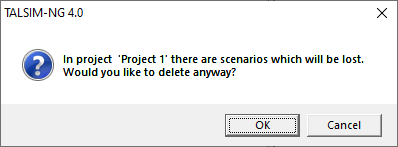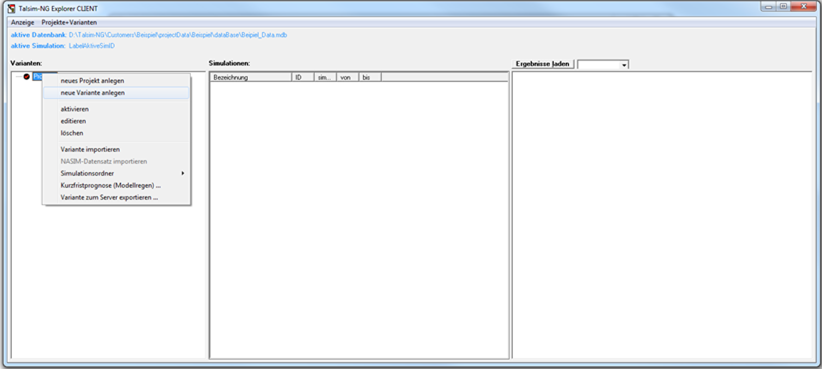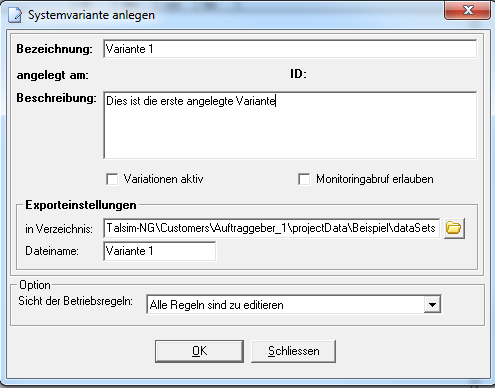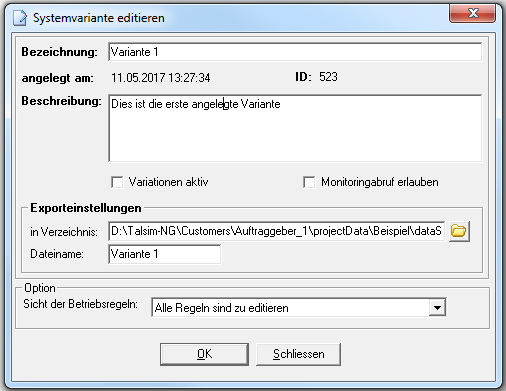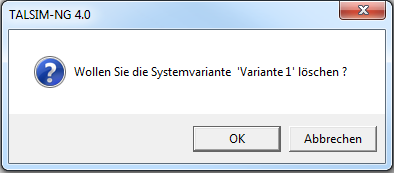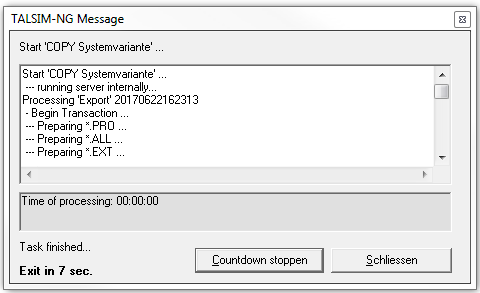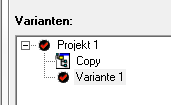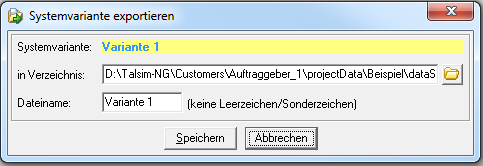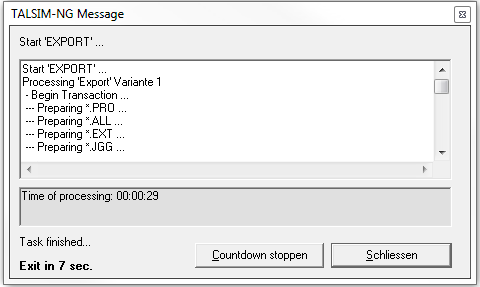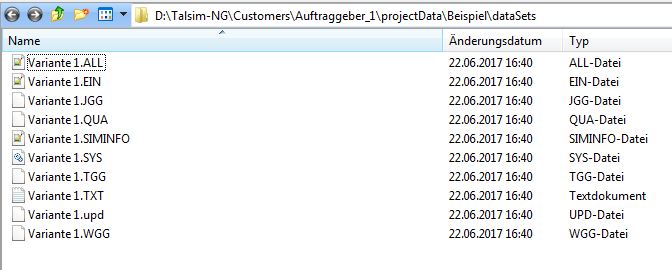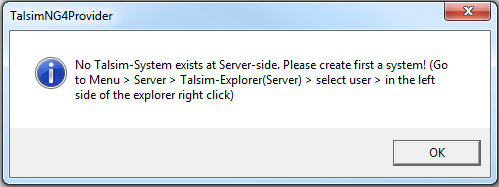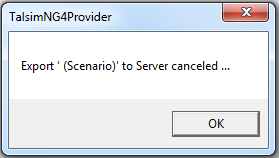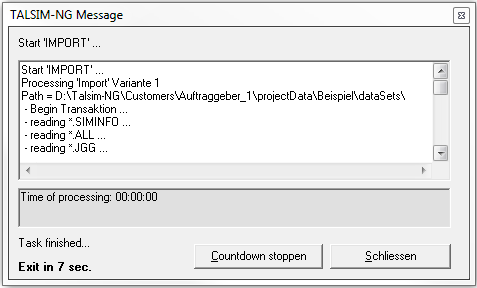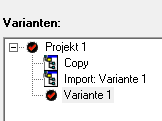Bereich Varianten/en: Unterschied zwischen den Versionen
Keine Bearbeitungszusammenfassung |
Keine Bearbeitungszusammenfassung |
||
| Zeile 47: | Zeile 47: | ||
For this reason the following window opens with a warning question: | For this reason the following window opens with a warning question: | ||
[[Datei: | [[Datei:Benutzeroberfläche00039_EN.png|Datei:Benutzeroberfläche00039_EN.png]] | ||
Version vom 24. November 2020, 15:39 Uhr
In the scenarios' section, new projects and variants can be created and managed. By right-clicking, on a project or a variant in the scenarios' section, either a menu entailing the same options as the menubar or a selection of the relevant options appear respectively.
Project
Create New Project
To create a new project, right-click in the scenarios' section then click on New project
The following window, in which the name and a short description of the project are indicated, appears. Click OK to create the project.
Activate Project
In order to edit a project, it must first be activated (![]() ). To do this, right-click on Project 1 → Activate.
). To do this, right-click on Project 1 → Activate.
Edit Project
To edit the settings for the project, right-click on Project 1 → Edit. The window corresponds to the one from Create new project.
Delete Project
If you want to delete a project, right click on Project 1 → delete. All variants and simulations belonging to the project will be deleted. For this reason the following window opens with a warning question:
Variant
To create a project area, a variant must be created. Each variant has its own project structure for which different simulations are performed. All simulations within a variant therefore have the same project structure and differ only in small changes of parameters. For large or small changes in the project structure it is recommended to create a new variant.
You can use the following buttons if you click on the variant in the system administration on the right:
Create new variant
To create a variant open the project manager under Menu bar -> Talsim -> System administration. Now click with the right mouse button in the project manager on the activated project and select Create new variant.
The dialog window Create system variant opens, in which information (name, description, export settings) for the variant are saved. Under Export settings, the path for the folder is specified in which the data record of the variant is to be saved during an export.
Under Options you can set whether the rules in the state groups should be edited.
| All rules are to be edited | All rules in the state groups can be edited. This is recommended if you work on the project yourself. |
| Only released rules can be edited | In the state groups it can be set whether the rule can be edited or not. Only released rules can be edited. This is recommended if you pass the model to another editor and certain rules should not be changed. |
| No rule can be edited | The rules in the state groups cannot be edited. This is recommended if the model is given to a third party and no changes are to be made. |
A new empty and inactive variant was created with an equally empty and inactive simulation. The variant has to be activated before it can be edited like the project.
Activate variant
To activate an existing variant, right-click on the corresponding variant and select "activate".
Variant editing
To edit the settings for the variant, right click Variant 1 -> edit. The window corresponds to the one from create new variant.
Delete variant
If you want to delete a variant, right click on Variant 1 -> delete. All simulations belonging to the variant are deleted.
Copy variant
If you want to copy a variant, right click on Variant 1 -> Copy variant. The following window with an overview of the copying process opens. If the copying was successful, the variant is displayed with "Copy". An empty and inactive simulation is automatically created. The settings in the simulation (e.g. simulation period) correspond to those from the active initial simulation.
Caution: To copy a variant, there must be an active simulation, otherwise the copying process is cancelled. The reason for the absence of an active simulation is the deletion of it.
Variant export
To create an ASCII-Dataset from a variant and its simulation, you have to export the variant. To do this, right-click on Variant 1 -> Export Variant. The following window will open where you can specify the location and the file name. With Save the dataset is created.
File Location: D:\Talsim-NG\Customers\Auftraggeber_1\projectData\Beispiel\dataSets\
File name: Variant 1
After confirming, a window opens with an overview of the export process.
The ASCII-Dataset can now be found in the specified location (default setting is the folder dataSets of the respective client and user, see also Directory structure). The size of the data set depends on the size of your system. The more data and system elements you include in your system, the more files are stored.
Decisive in ASCII-Dataset is the *.SYS file, since this is needed for importing.
Caution: To export a variant, there must be an active simulation, otherwise the export process is cancelled. The reason for the absence of an active simulation is the deletion of it.
Export variant to server
If you want to upload a variant to the server, click with the right mouse button on Variant 1 -> Export variant to server. This is only possible after you have created a system in the variant. Otherwise the error messages will appear.
Caution: To export a variant, there must be an active simulation, otherwise the export process is cancelled. The reason for the absence of an active simulation is the deletion of it.
Import Variant
If you want to import a data record in your existing project, right-click on Project 1 -> Import variant. You need the *.SYS file to import from the dataset. You can find this file for example under:
D:\Talsim-NG\Customers\Auftraggeber_1\projectData\Beispiel\dataSets
The following window with an overview of the import process opens. If the import was successful, the variant is displayed with "Import: Variant 1". An empty and inactive simulation is also automatically created. The settings in the simulation (e.g. simulation period) correspond to those from the active initial simulation.
